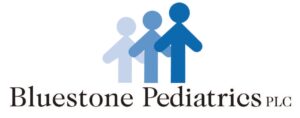
ADHD (Attention-Deficit Hyperactivity Disorder)
What is ADHD?
ADHD is an abbreviation for Attention-Deficit Hyperactivity Disorder. To be diagnosed a child must exhibit specific symptoms of hyperactivity or inactivity in two or more settings for more than six months. There is no single test to diagnose ADHD but doctors gather information from school, parents, and caregivers to help with the diagnosis.What are some of the symptoms?
These children are in constant motion and seem to always be squirming and fidgeting. They do not seem to listen and they have difficulty playing quietly. They often have difficulty in school because they talk excessively, interrupt others, do not finish tasks, and are easily distracted. There are some other causes of ADHD-like behavior such as, a sudden life change (divorce, move, death in the family); anxiety; depression; sleep problems or undetected seizures.How is ADHD diagnosed?
The American Academy of Pediatrics has developed guidelines for diagnosing ADHD in children ages 6-12. One of these resources is called the Vanderbilt forms, which we use regularly in this practice. Diagnosing ADHD in children under 5 is very difficult because children this age often exhibit some of these symptoms normally. The process of diagnosing ADHD contains multiple steps and involves getting information from multiple resources. We use the Vanderbilt forms to gather information from the parents and teachers. We also may request a child study performed either by the school system or JMU for further evaluation. During the first ADHD appointment your child may have blood drawn to evaluate the lead level and hemoglobin level. His/her height, weight, and blood pressure will be measured. A complete history will be taken by the physician and a complete physical exam will be performed. All of this is done to make sure there is not an underlying medical condition causing the symptoms.What are the different types of ADHD?
- Combined Type (Inattentive/Hyperactive/Impulsive). Children with this type of ADHD show all three symptoms. This is the most common form of ADHD.
- Hyperactive/Impulsive Type. Children show both hyperactive and impulsive behavior, but are able to pay attention.
- Inattentive Type. Formerly known as attention deficit disorder (ADD), these children are not overly active. They do not disrupt the classroom or other activities, so their symptoms might not be noticed. They space out and often have no idea what is going on around them.
How is ADHD treated?
Education is the cornerstone of treatment for ADHD. This includes educating the family, child, and caregivers about ADHD. Other aspects may include special education services, psychological intervention, behavior modification therapy, and medications. Multiple studies show the best treatment includes medication and behavioral therapy. There are two main types of medication for ADHD. The first are stimulants, which include Ritalin, Concerta, and Adderall. The second are nonstimulants, which includes Strattera. It will take time for your physician to find the right medication, dosage, and schedule for your unique child. These medications can have side effects. Please discuss your concerns with your child’s physician regarding any of the medications. Behavioral treatment helps the child with ADHD learn to adapt to their environment and promotes more successful social interactions. Some of the aspects of this treatment include creating structure, following a routine, and explaining expectations to the child. Other things may also be helpful for children and parents such as support groups, social skills training for the child, or parenting skills training.ADHD PARENTING RESOURCES
Books:
Taking Charge of ADHD: A Practical Guide for Teachers and Parents; Russell A. Barkley, Ph. D. Driven to Distraction: Recognizing and Coping with Attention Deficit Disorder from Childhood through Adulthood; Edward Hallowell and John Ratey The Attenion Zone: A Parents Guide to Attenion Deficit Hyperactivity Disorder; Michael W. Cohen Otto Learns About His Medicine; Matthew Galvin, M. D. – a children’s book Raising Your Spirited Child: A Guide for Parents Whose Child is More Intense, Sensitive, Perceptive, Persistent, Energetic; Mary Sheedy KurcinkaInternet Resources:
www.chadd.org – Children and Adults with Attention Deficit Hyperactivity Disorder www.add.org – National Attention Deficit Disorder Association www.ldanatl.org – Learning Disabilities Association of America www.americoach.org – American Coaching Association www.ncld.org – National Center for Learning Disabilities http://www.nimh.nih.gov/health/topics/attention-deficit-hyperactivity-disorder-adhd/index.shtml – National Institute of Mental Health http://www.cdc.gov/ncbddd/ADHD/ – Centers for Disease Control and PreventionADDRESS
Bluestone Pediatrics
4059 Quarles Court
Rockingham, VA 22801
PHONE
Phone number: (540) 437-4800
Fax #: (540) 437-9012
Billing Office: (540) 434-1512
After-hours and weekend emergency phone number: (540) 432-7311
APPOINTMENTS
CHECK-UPS AND SICK VISITS
MONDAY – FRIDAY
8:00 A.M. – 5:00 P.M.
WALK-IN HOURS
ACUTE ILLNESS ONLY:
MONDAY — FRIDAY
8:00 AM — 9:00 AM
SATURDAY
9:00 AM — 11:00 AM
SUNDAY
9:00 AM — 11:00 AM
© 2024 Bluestone Pediatrics | All Rights Reserved | Site design KWGraphicsandWeb